Once something firmly rooted to the ground, buildings are now becoming innovative moving entities that can rotate, swivel, revolve and even follow the sun. Putting a whole new spin on the world of architecture, these rotating houses could be a real catch for those who would fancy a different view out of their window every day.
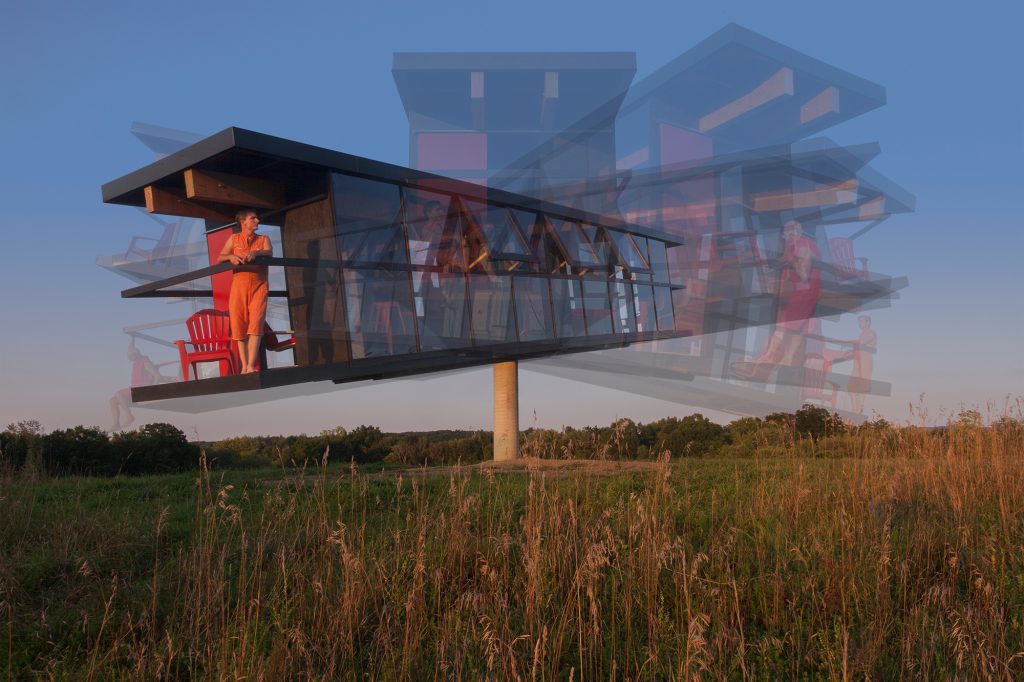
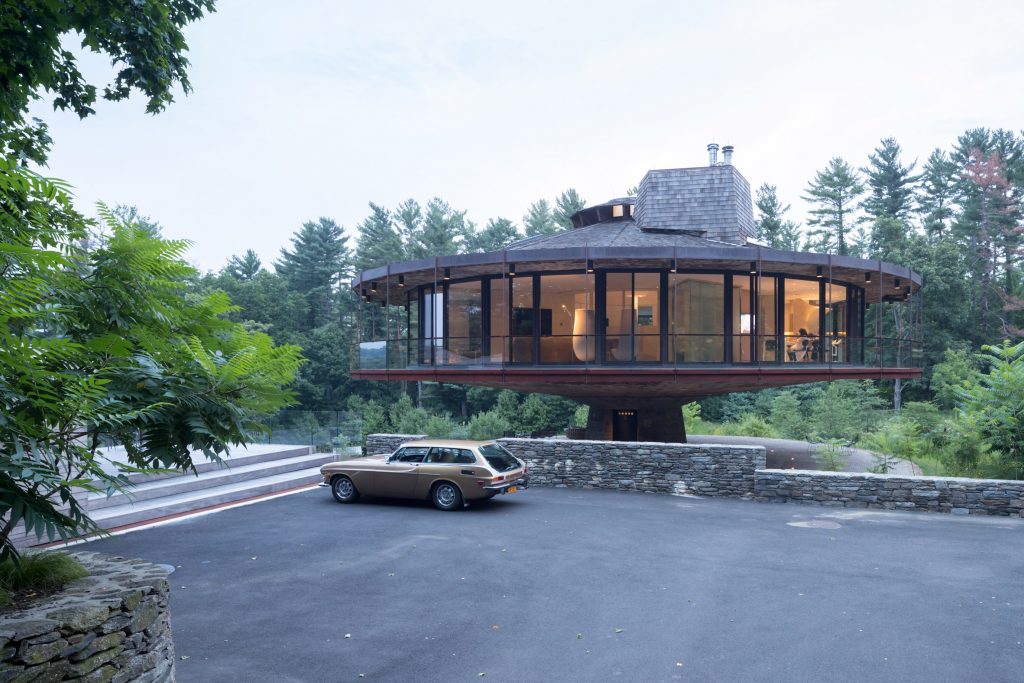
Round House renovation by Mack Scogin Merrill Elam
The story of the Round House that can rotate 360 degrees providing any room in the housewith a variety of views started back in 1966, when Richard Foster, an architect and engineer who worked with Mies van der Rohe and Philip Johnson, discovered a green dip in the landscape in Wilton, a small town in southwestern Connecticut. The spot struck him as “a perfect amphitheater”, which made him go through five design concepts before arriving on the circular home that would offer the inhabitants unobstructed views from any room at any time.
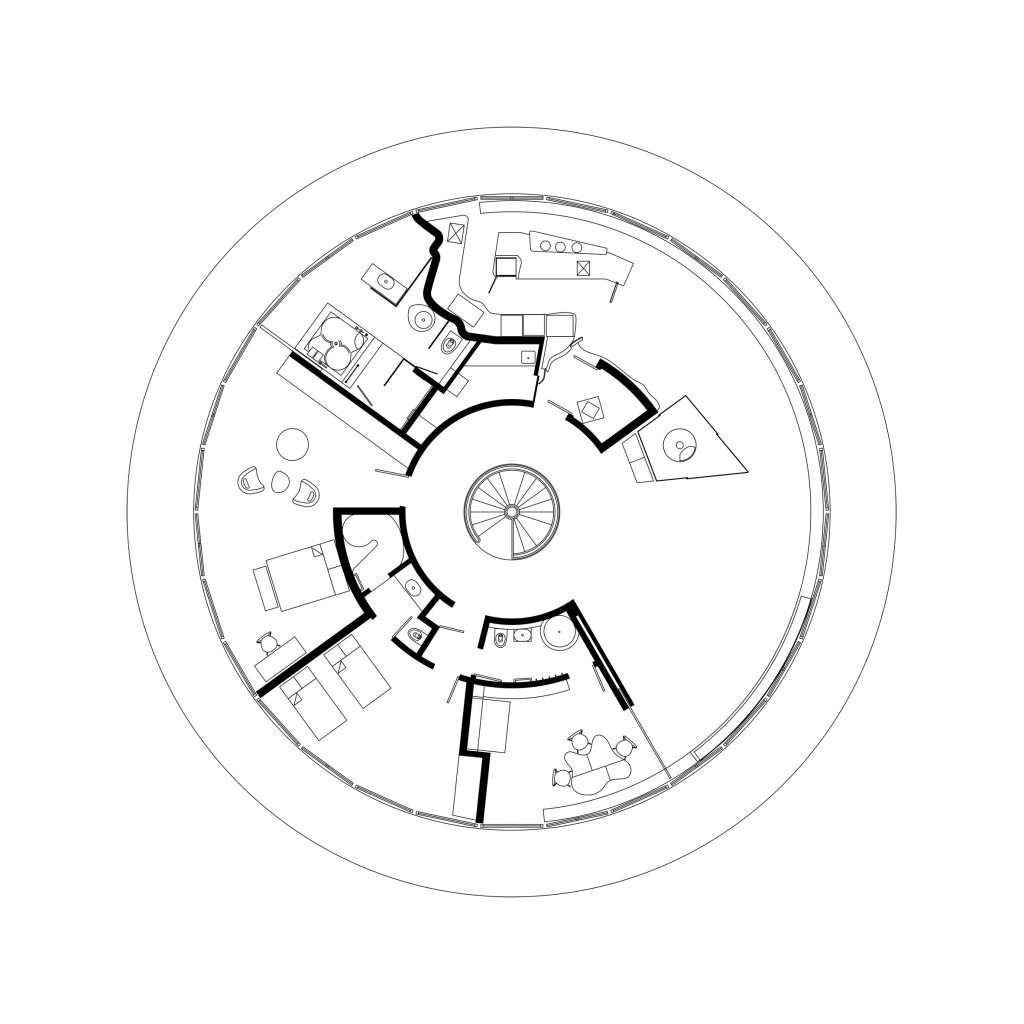

Round House renovation by Mack Scogin Merrill Elam
The building has a steel structural system. Measuring 22 metres in diameter, the house is elevated above the ground, forming a patio underneath, and is anchored to a cylindrical core that contains a spiral staircase, providing access to the interior. Features such as the Corten steel circular porch, wood shingles, stone pavers have given the home a well-worn patina while also connecting it to the local surroundings.
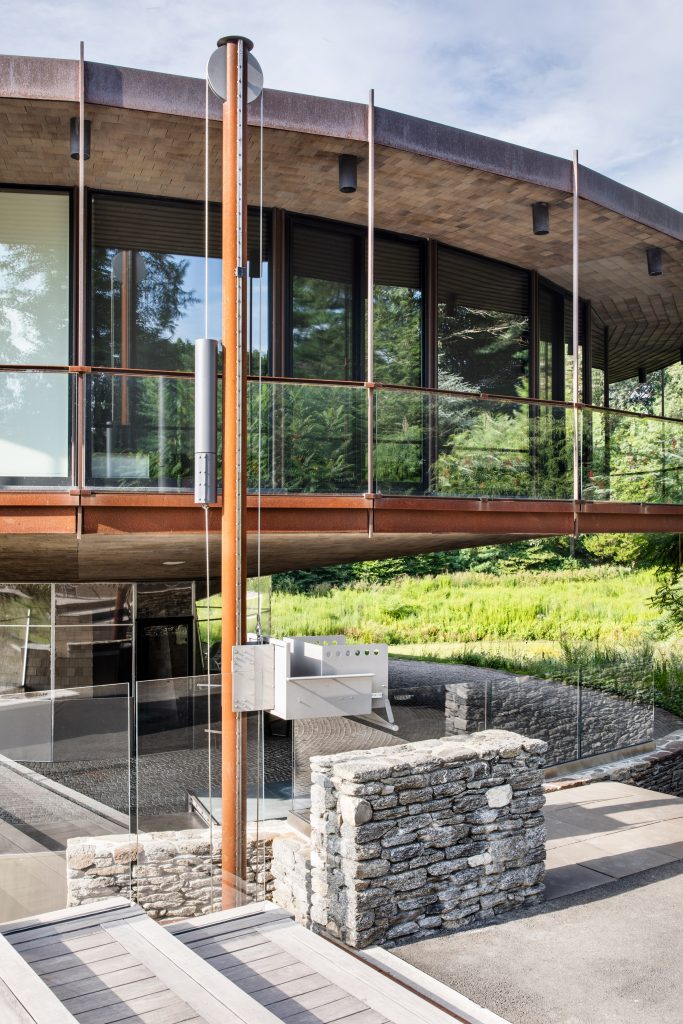
Round House renovation by Mack Scogin Merrill Elam
The Fosters lived in the home for over 35 years, until the architect passed away in 2002. In 2012, the new owners of the residence, a Manhattan couple who use it as a weekend getaway, hired Atlanta firm Mack Scogin Merrill Elam Architects to update the unusual property. The home underwent a deep renovation.

Round House renovation by Mack Scogin Merrill Elam
The home systems that were cutting edge in the late 60s were upgraded for the day. With the touch of a button on a control panel, the owner can set the house in motion made possible by an electric motor and mechanical components similar to those used in gun turrets. Using the fastest speed, it takes 45 minutes for the building to complete a full circle.

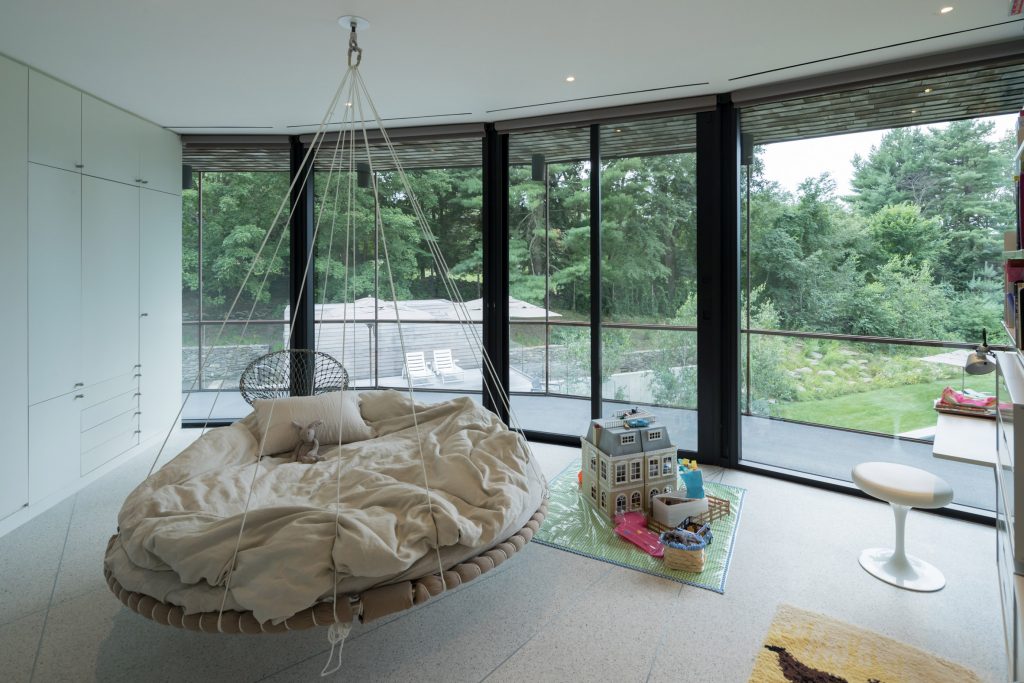
Round House renovation by Mack Scogin Merrill Elam
The exterior elements of the house, such as the wooden shingles, the patio’s cobblestone flooring, and the weathering-steel fascia that encircles the building, were restored very much to its original finish. Modifications to the interior were guided by the goal to reveal the potential of natural light and included removal of partitions and introduction of reflective surfaces and light-toned finishes.
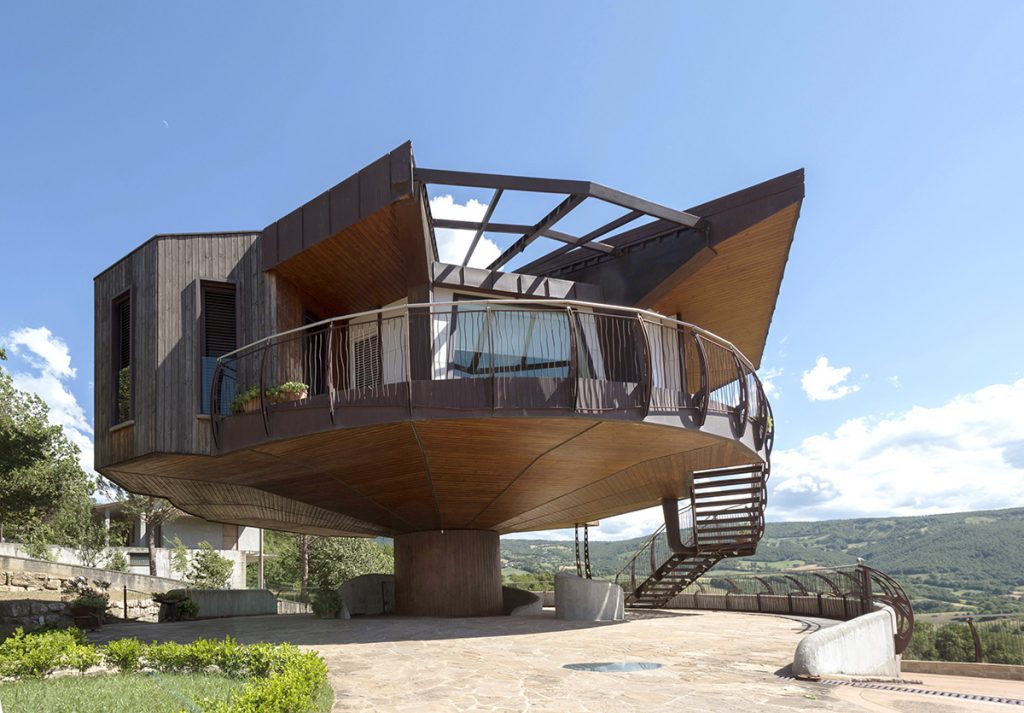
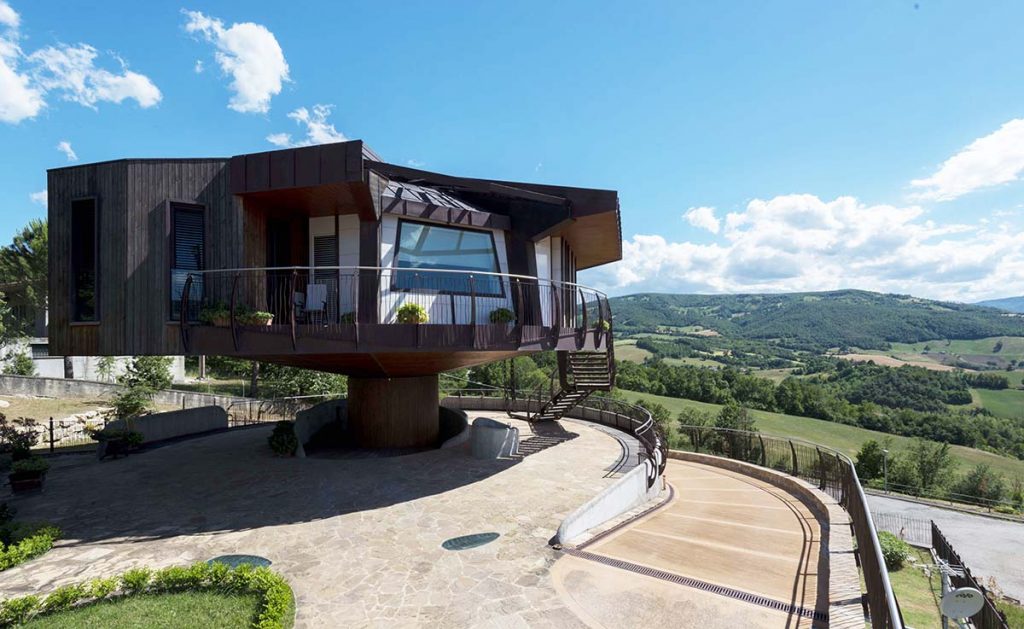
Casa Ruotante by Roberto Rossi (via World Architecture)
Another 360 degrees rotating private residence was built near the city of Rimini, Italy, by the local architect Roberto Rossi. Named Casa Ruotante, the house is an experimental project to set a toolkit for zero-energy balance.
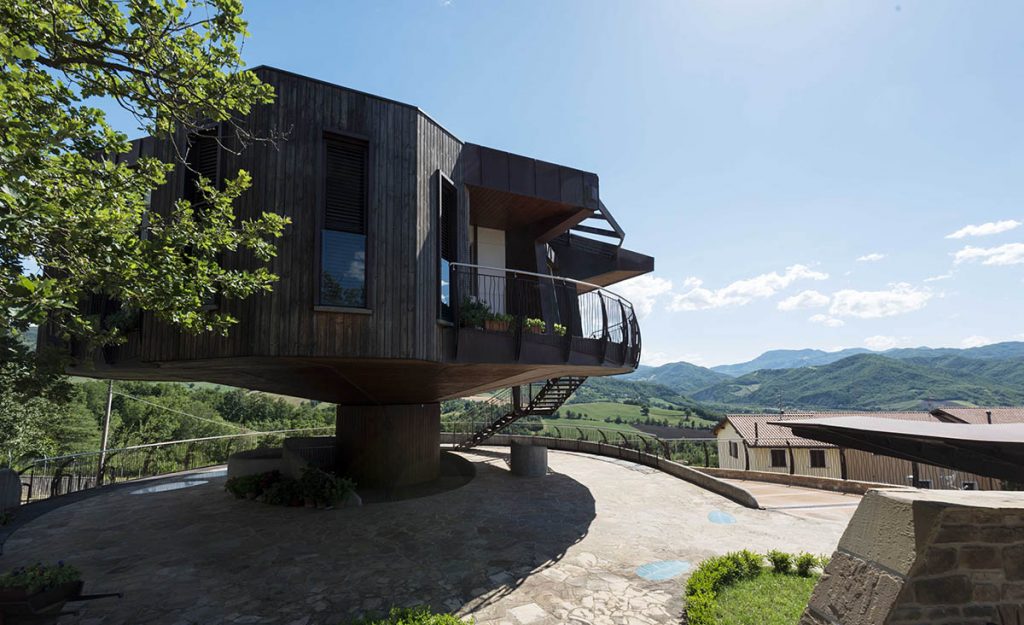
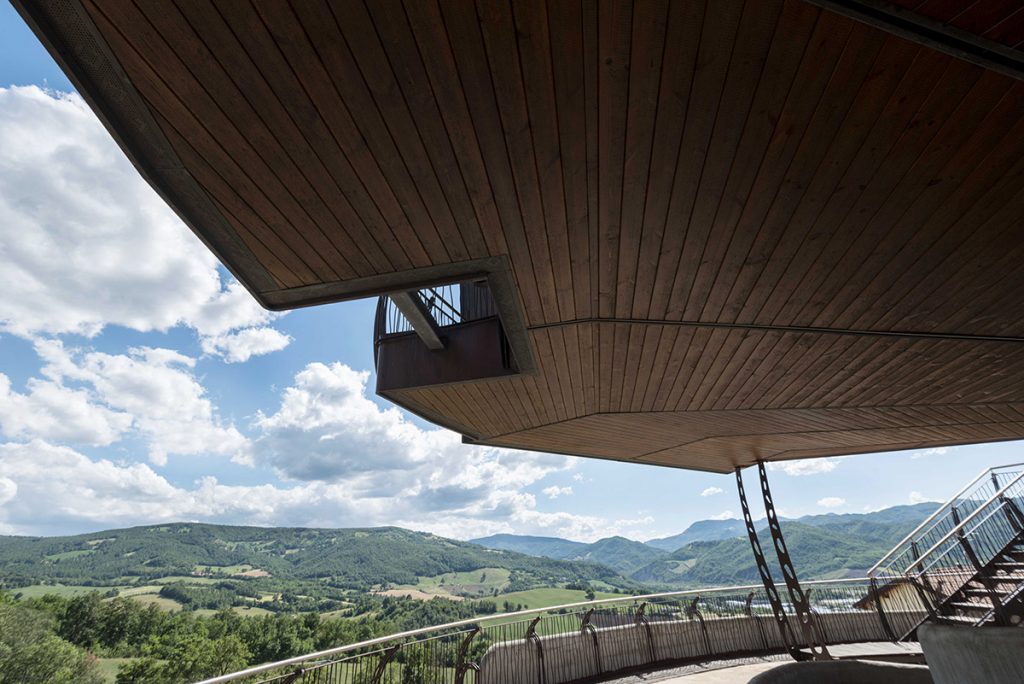
Casa Ruotante by Roberto Rossi (via World Architecture)
Balanced on a central pillar, the 150 sqm octagonal house can be mechanically rotated in both directions to give its owner a variety of views. The structure is manufactured of bolted steel beams connected to wooden framework, while the walls are made of wooden strips and feature insulation panels of hemp and wood fibre.
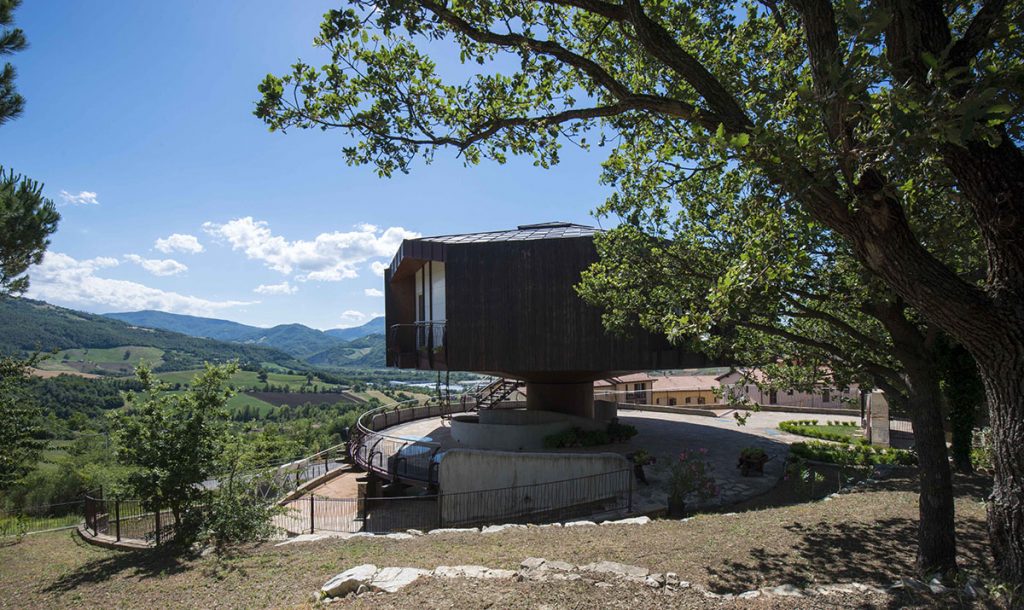
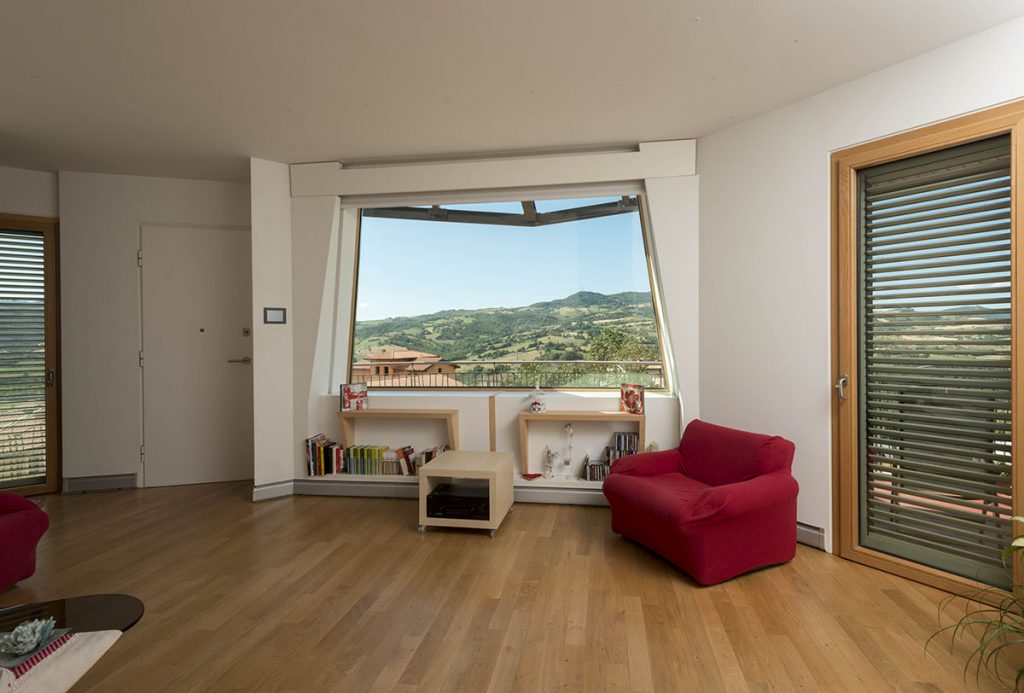
Casa Ruotante by Roberto Rossi (via World Architecture)
According to the architect, the house generates all of its own energy. The rotation helps gaining the highest efficiency from the house’s rooftop solar panels, installed to make the structure energetically independent, by having the best orientation throughout the day. Along with the photovoltaic panels, the house is equipped with a heat pump and a solar thermal system adopted for temperature control and conditioning. The residence also features a storage tank used to drain rainfall water for non-potable usages.
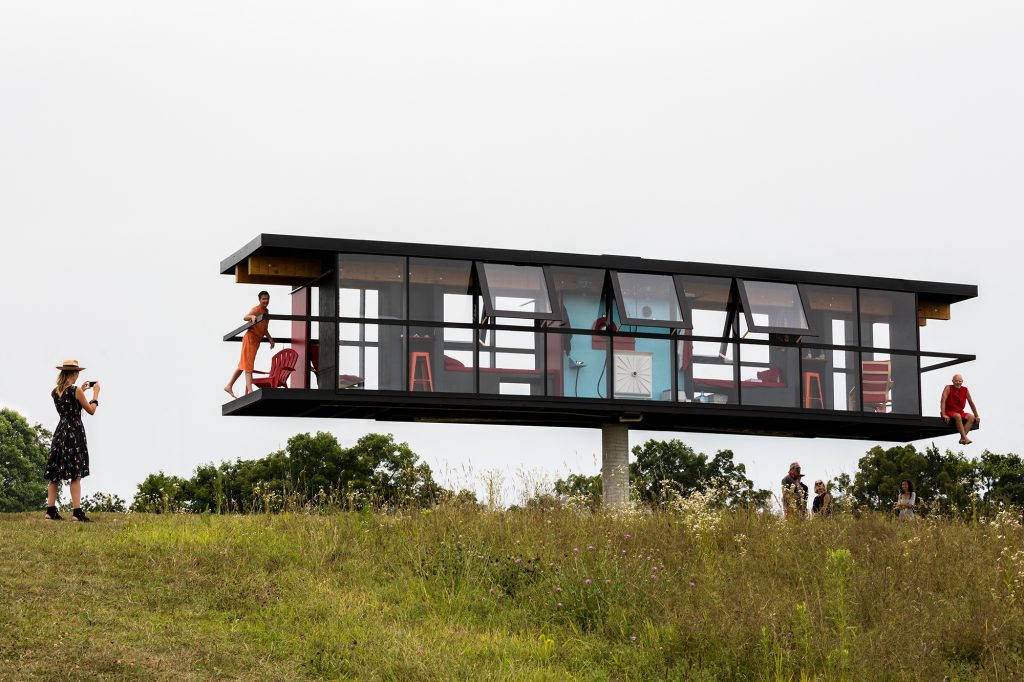

ReActor by Alex Schweder and Ward Shelley (also header image)
Balanced atop a single column, ReActor by New York based artists Alex Schweder and Ward Shelley, is a drastically different approach to rotating houses. Conceived as part of an experimental, performative series of ‘social relationship architecture’, the habitable sculpture not only spins 360 degrees, but also twirls when the wind blows and tilts see-saw like with the shifting weight of its inhabitants. The project is intended to make visible the intimate relationship between the architecture and its inhabitants.


ReActor by Alex Schweder and Ward Shelley
Balanced atop a 4.5m concrete column, the symmetrical timber structure measuring 13.4 x 2.4m has been divided in half, with each artist allocated their own living quarters and own external balcony. A shared bathroom is positioned at the center of the plan.
During the International Arts Center’s Architecture Field organized by OMI international arts center in 2016, the duo lived in the rotating house.